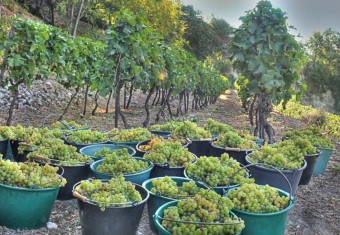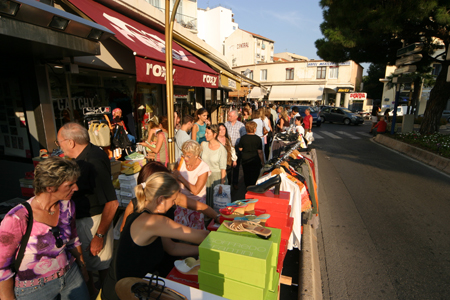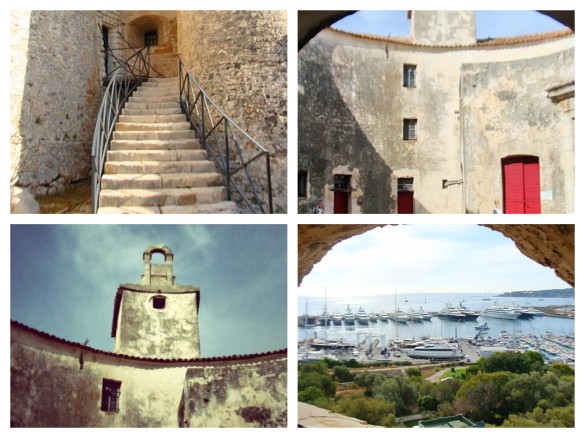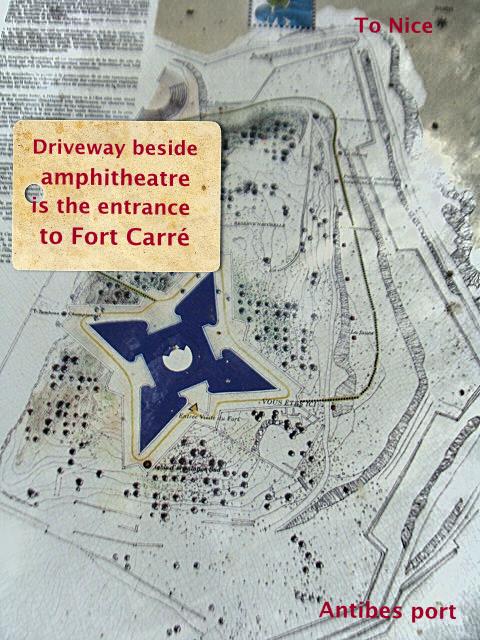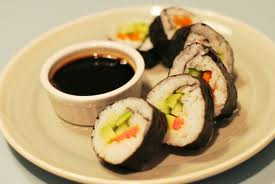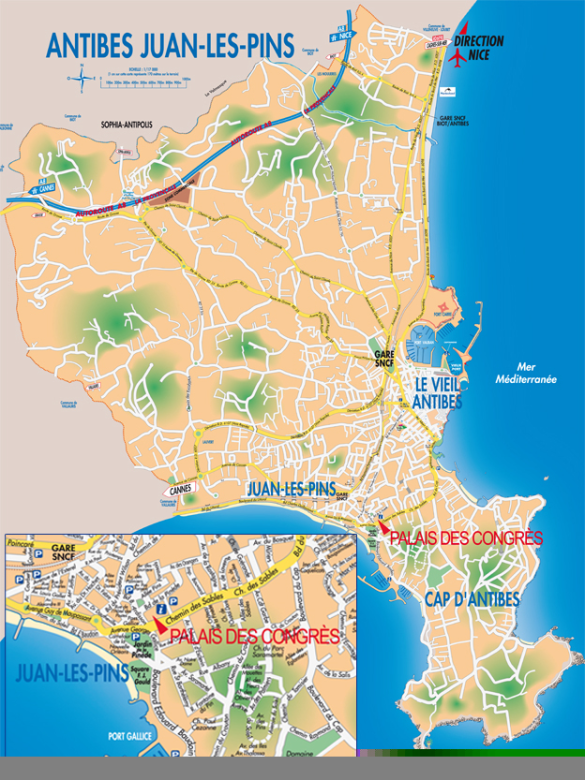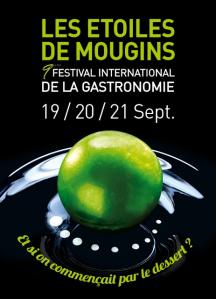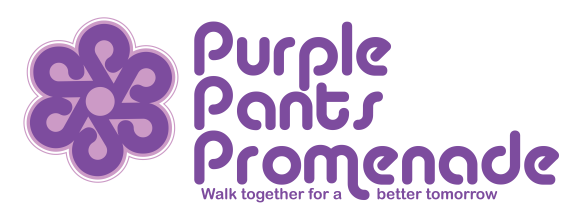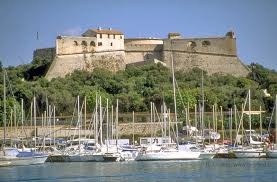Before you focus on the French Riviera, you need to know a little about France as a country if you plan on moving here.
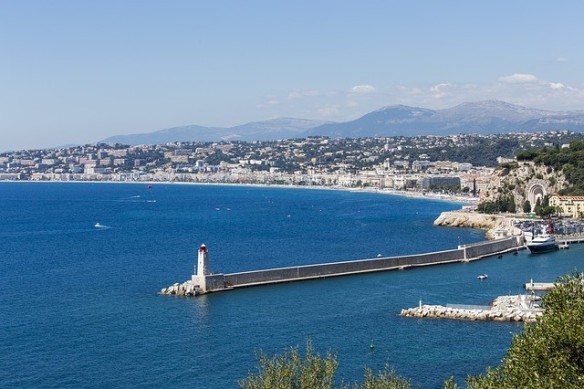
Nice, French Riviera (image: pixabay)
Population: 65 million
Language: French is the official language and is spoken almost exclusively throughout the country – nearly 100% of French residents speak French. There are a few dying dialects and languages such as Creole and Flemish, but French is the language you need to learn to fully understand everything.
Capital: Paris
Currency: Euros, formerly francs
*** FRANCS ARE NOW WORTHLESS. If you have francs that were never exchanged for euros, it is too late to convert them, as the deadline passed in 2012. Just save them as collector’s items.
Moving to south-east France – specifically the French Riviera
Moving to the French Riviera from another country? The French Riviera, locally known as the Côte d’Azur, is a popular destination for international travellers due to its natural beauty and the variety of available activities.
There are beaches, museums, restaurants, and snowy slopes to visit all in one area. Nice is the main city in the area and has a population of just under 400,000 residents.
You should be familiar with Nice Cote d’Azur Airport and the Port of Marseille if you are moving into this beautiful part of France. These international hubs provide the most direct route into the French Riviera for both you and your household goods.
The Port of Marseille (Marseille-Fos Port)
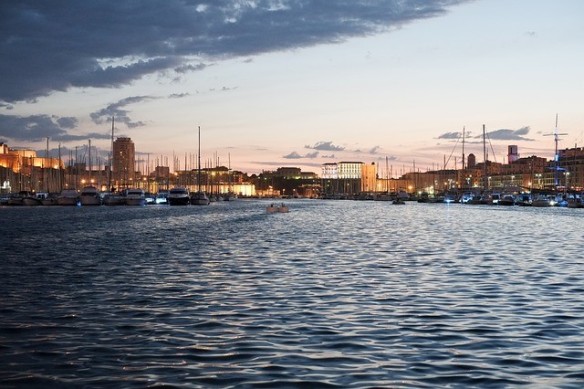
Marseille port (image: pixabay)
The Port of Marseille is the ideal port for shipping your household items to the French Riviera.
This major port is close to the Cote d’Azur and is a huge international port that accepts both commercial and personal shipments. Be sure to contact them if you are using their services directly. Most international moving companies will ship into Marseille anyway if they were given good information about your destination, so it is a good idea to know their policies even if you don’t have to contact them yourself.
Tips for shipping to the French Riviera
- Try to get a pre-move survey so someone from the moving company can accurately assess your household. The survey should give you a good idea what the cost of your shipment will be.
- You will be charged for the volume of your shipment, so make sure that you choose wisely when determining what to bring with you.
- There are different sized containers that will determine the cost of your shipment (40 ft. long containers are standard) so if you are around the borderline of a larger size, try to downscale your shipment to fit in the smaller container to save money.
- Remember that you may arrive in France before your shipment does. Most seafaring international shipments take several weeks to reach their destination. Carry what you will need right away with you on your plane to the Nice Cote d’Azur Airport.
- The rules for shipping items into the port are the same as rules for shipping anything into France. You can review the limitations and restrictions in the following customs regulation lists below. NOTE: All of these listed regulations are subject to change and you should always contact the French consulate in your country if you have any questions regarding immigration, visas, or customs.
Limits on Imports
France has several limitations on the quantity of certain items you can import. Here is a list of most, but not all, limited items (rules are subject to change at any time without prior notice):
- Cigarettes: 200 units
- Cigarillos: 100 units
- Cigars: 50 units
- Still wines: 4 litres
- Beer: 16 litres
- Spirits over 22 degrees volume: 1 litre
- Fortified wines, 22 degrees volume or less: 2 litres
- Medications: Depends on the nature of the traveller’s need for them, travel with proof of your prescription
- Motor fuel: 10 litres or less
Things to keep in mind when importing
- Duty and tax exemptions can apply to individuals, but not groups.
- High value items worth more than the maximum exempt amount will be subject to duties and taxes.
- You can bring personal items like guitars or bicycles into France and not be charged any taxes or fees as long as they are for personal use and not sold or thrown away in France.
- All personal items declared at customs when you arrive in France must be taken back with you when you leave.
Prohibited Items

Be aware of what is classed as a prohibited item when importing to France (image: pixabay)
Regular citizens are not allowed to import the following prohibited items into France:
- Paints, polishes, and cleaning chemicals
- Illegal or undocumented drugs and narcotics
- Live plants
- Ivory and all animal skins
- Pornographic materials
- Explosives, matches
- Counterfeit goods or currency
Restricted Items
Some articles require special authorisation or the payments of duties and taxes to clear French customs. These items include, but are not limited to:
- Alcohol: must be inventoried separate from the rest of the shipment with brand name, type, amount, number of bottles, and value indicated (Import License or liquor license may also be required)
- Tobacco products: subject to a duty or tax based on quantity
- Medications: may be limited to personal use amounts and require proof of prescription
- New items (less than six months old): subject to just tax if arriving from EEC countries or tax and duties if coming from other countries. They must also be documented with sales invoices
- Works of Art, oil paintings, sculptures, antiques, etc: need a Certificate of Authenticity
- Video tapes, fax machines, telex machines and books: will be held temporarily by customs until necessary authorisation is obtained for each item
- Coats, fur and leather shoes made of protected animals: will need special authorisation
- Meat and dairy products: France has complex requirements, restrictions, and limits that apply to importing food. Meat and dairy products require particular attention due to their short shelf life
- Plant products: may require permits or inspection at port of entry by the Plant Health Inspection Service
- Guns, weapons and ammunition: highly regulated and require various registrations and certificates. They also require authorisation from the French Defence Ministry (which needs to register the make, calibre, serial number and purpose)
- Some weapons are strictly prohibited (firearms which have no legitimate sporting or recreational use are not permitted into France)
- May not be shipped with household goods
Motor Vehicle Regulations

If you plan on importing your car, read up on the Motor Vehicle Regulations for France (image: pixabay)
Your car is going to need to meet the following requirements if you want to take it to France:
- Expatriates who plan on remaining in France for an extended period of time can import one vehicle duty-free and claim it as a personal effect
- Foreigners can import an automobile duty-free if the owner has been living abroad for more than one year, the car has been owned for six months prior to the import date, and if it is registered as a commercial vehicle
- You may not get rid of your car within two years of importing it into France
- The vehicle’s information should be written in your inventory: its year, make, model, engine, horse power, and registration numbers
- Certain makes of cars are not allowed in France
- Vehicles must pass French standards inspection and must be road-ready. A road-worthiness certificate in France is called a ‘contrôle technique’ (CT).
Documents required for auto shipping:
- Purchase Invoice (original)
- Original title showing owner’s name and vehicle serial number
- Insurance Certificate from a French insurer
- Registration Card (original)
- Plate numbers
Pets and Animal Regulations
You can bring a pet into France only if you follow these rules:
- Every pet must be identified by a microchip or a tattoo. The tattoo should be legible and applied before July of 2011
- No pets under three months old are allowed
- You should be with your pet at customs
- The pet needs proof of its rabies vaccine and a medical certificate that says it is healthy
- Endangered species and exotic animals are not allowed to be imported
- All pets may be quarantined if they seem diseased or dangerous
Nice Cote d’Azur Airport
Nice Airport is the main airport hub on the French Riviera. You need to be wary of which airline you are flying in on, however.
Nice Airport, like many other EU airports, bans certain airlines that do not meet its safety standards. Most carriers from Afghanistan, for instance, will not be allowed to fly to Nice Airport. Be sure to check to see if your local carriercan fly to Europe. Most of the restricted airlines are from war-torn countries, so if you are travelling from a dangerous country, you may need to search for a foreign airline.
Family friendly Airport
Once you do get to the airport, you should be pleased with how family friendly it is. It is the first airport in France to be certified under the Famille Plus label. This certifies that all aspects of the airport are family friendly.
This means that all of the restaurants and shops in the airport are family friendly, the bathrooms have baby changing stations, and on weekends and school holidays, there is a dedicated security line for families only.
Nice Airport also has an unaccompanied minor (UM) policy that will help families. Children under 12 and over four can travel without an adult as an unaccompanied minor. As long as the child has official identification, the staff of the airport will accompany them and make sure they are looked after and headed to the correct terminal. UM children receive a pouch containing all of their identification and their ticket.
You can pick up your UM child with your luggage, you just need to show some photo ID. There is a designated child-friendly area where the children wait for their guardians to pick them up.
Please note that children over the age of 15 need to have their own Identification papers and an individual passport.
Passengers with reduced mobility
The airport also makes allowances for passengers with reduced mobility, as per European regulations.
You need to inform the airline or travel agency of your needs at least two days before departure.
Let the airport know that you need assistance as you arrive, also there are service kiosks outside of the airport.
You can also request assistance at the regular check in area. You should give yourself an extra hour or two for reduced mobility services.
French Customs Regulations
You will need some documentation when you come into the airport. Here are documents you will need to get yourself and your shipment into France:
- Valid Passport
- Visa
- Work permit
- Certificate of Change of Residence which is obtained from the French Consulate which includes the dates of your stay
- Proof of residence in France (if you are returning)
- Transfer letter from employer that indicates when you were employed abroad
- Three copies of your valued inventory (which needs to be in French)
- Electronics need to be listed separately with brand names and serial numbers
- Delivery address for your items
Still have some questions? Head over to the Nice Airport FAQ section for more information about your flight.
I hope this information can help you and your family enjoy your move or trip to the French Riviera. I’d like to thank Access Riviera for letting me share this information with you. Safe travels!
About the author of this guest blog
Mike Sannitti is a content writer for Internationalmoving.com, Topmoving.ca, and Movers.com where he writes about all aspects of moving.
He also podcasts and posts on allyoucangeek.net
He is based in New Jersey, USA
Please share this article on:


